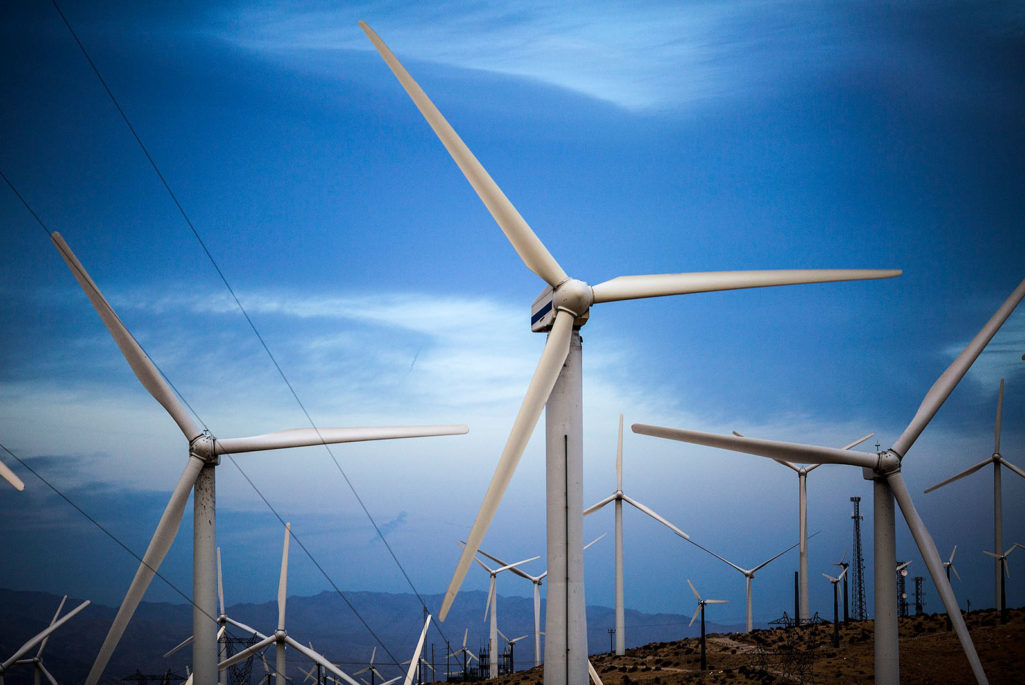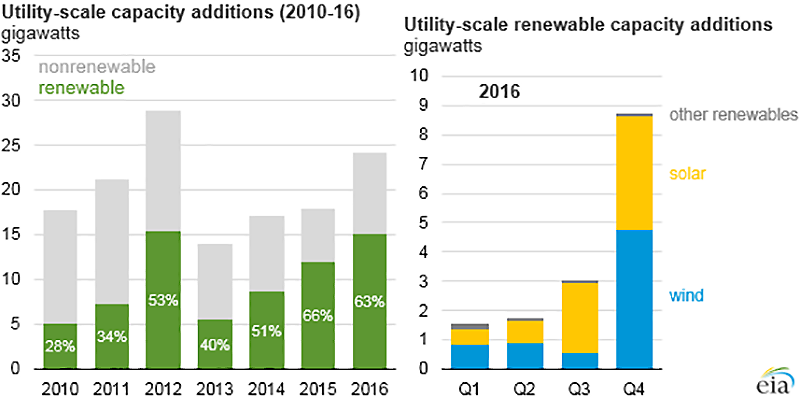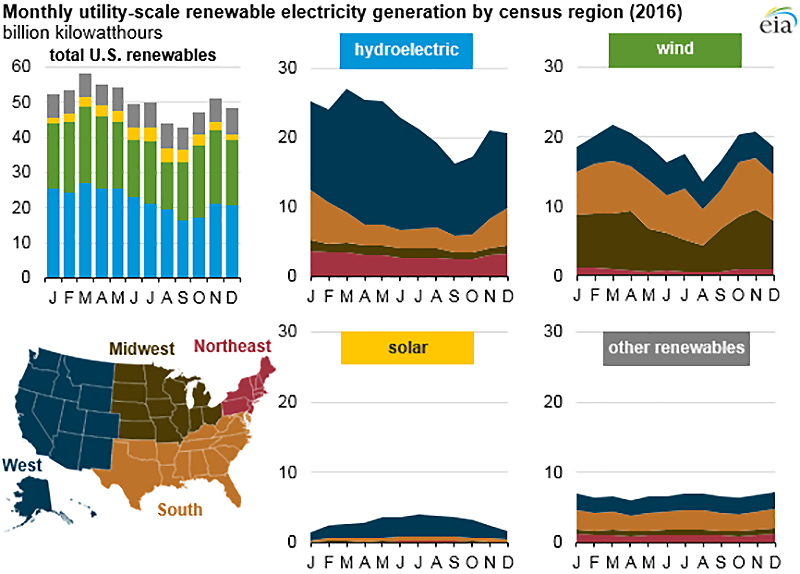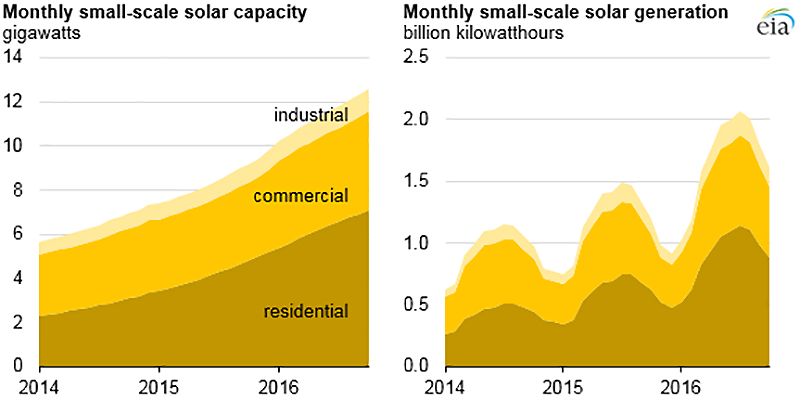For New Power Gains in U.S., Renewable Energy Is King

Electric energy generating wind turbines are seen on a wind farm in the San Gorgonio Pass area on Earth Day, April 22, 2016, near Palm Springs, California. San Gorgonio Pass is one of the largest wind farm areas in the U.S.
Photo: David McNew/AFP/Getty Images
According to data released by the U.S. Energy Information Administration, 24 gigawatts (GW) of new electricity generation capacity were added to the United States power grid in 2016. If you haven’t been keeping a close eye on U.S. energy infrastructure, the source of more than half (63 percent) of this new energy capacity might surprise you: It’s renewable energy.
That’s the third year running that more than half of new energy additions stemmed from renewable sources, particularly in the wind and solar sectors.
Renewable power capacity peaked in March when heavy rains and melting snow contributed to high amounts of hydroelectric power. In addition, strong winds peaked wind power generation as well.
The West ranks first in renewable energy generation and accounted for most of the hydro (63 percent) and solar (77 percent) power produced in the U.S. last year. Wind generation is more evenly spread across the country, with 37 percent coming from the Midwest, 35 percent from the South and 24 percent from the West; the remaining 4 percent comes from the Northeast.
As of October 2016, the U.S. had a total of 12.6 GW of small-scale solar (one megawatt or less) installed. Households accounted for 56 percent of that capacity, 36 percent came from the commercial sector and industry fills in the remaining 8 percent. Monthly generation from small-scale solar peaked in July at 2.1 billion kilowatt-hours (kWh), the EIA said.
“The distinction between capacity and generation shares is important to recognize,” the EIA said. “Because non-dispatchable technologies such as wind and solar facilities generate power only to the extent those respective resources are available, their capacity factors are typically lower than those of other resources.”
The EIA listed other renewable electricity highlights for 2016 as:
- The production tax credit (PTC) for wind and the solar investment tax credit (ITC) were extended at the end of 2015. The tax credits include an eventual decline in value for both technologies, with the PTC for wind expiring in 2020 and the ITC for large-scale solar declining from 30 percent to a permanent 10 percent and expiring for residential projects in 2022.
- New York, Oregon and the District of Columbia extended and expanded their mandates for renewable electric generation to reach 50 percent of each state’s total electricity generation by 2030, 2032 and 2040, respectively.
- Hydroelectric generation increased as drought conditions that affected hydroelectric generation on the West Coast in 2014 and 2015 diminished.






